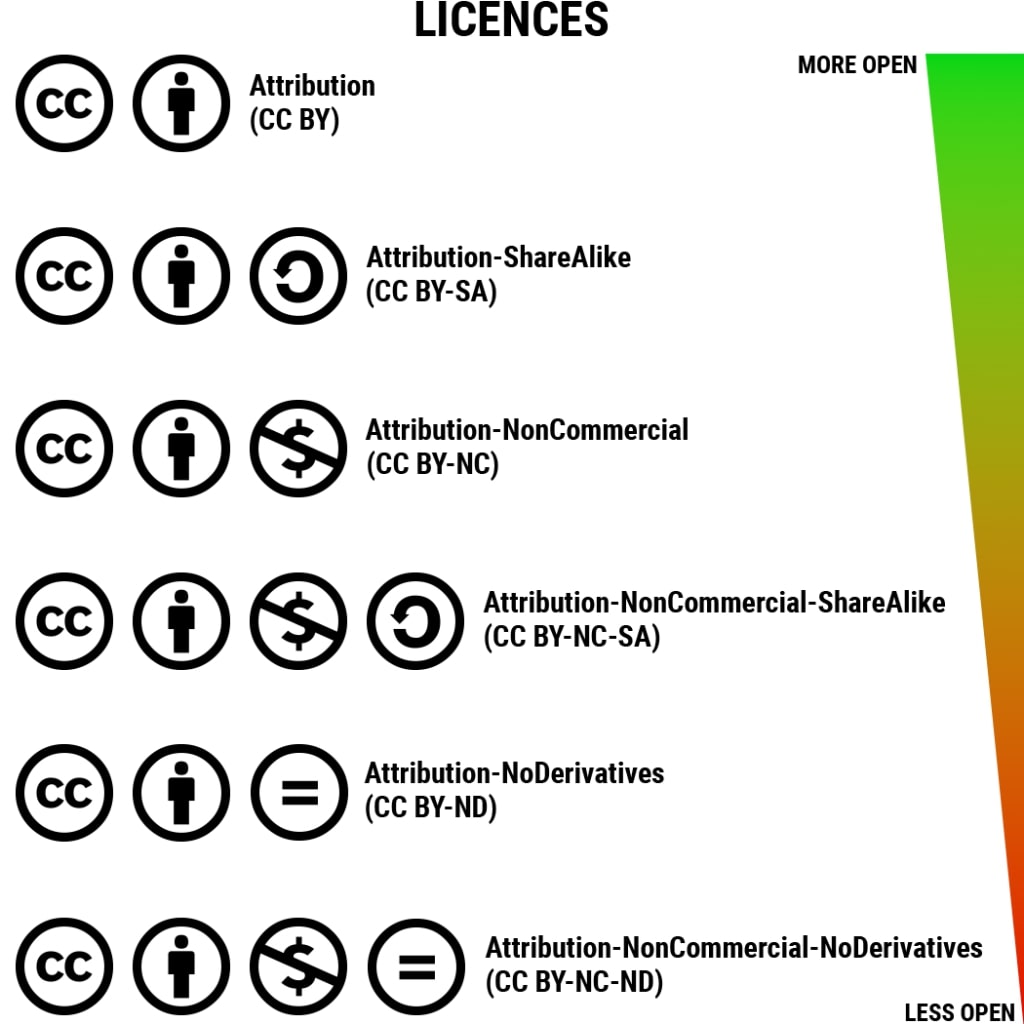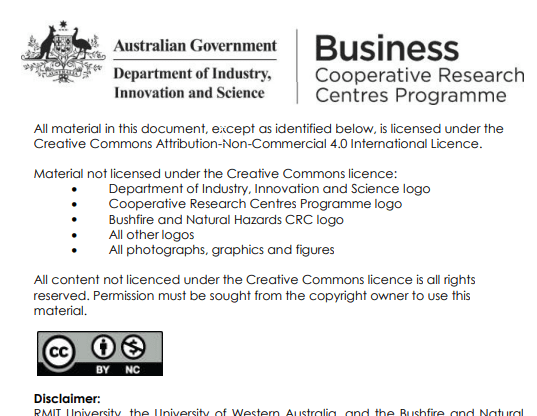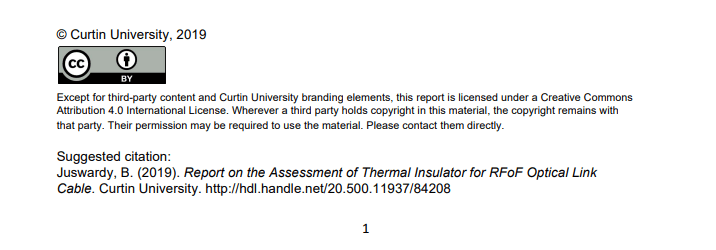Explore our list of open and public domain audiovisual content
Creative Commons, open access and the public domain
Copying, communicating, publishing and adapting are critical rights that only copyright holders can perform unless agreed otherwise.But in many situations, creators (including staff and students at Curtin) may want to make their works easier for other people to copy and adapt.
Making work more “open” in a copyright sense can improve the impact and reach of copyrighted works while still earning them recognition and citation. Increasingly, material is being published through open methods, including Creative Commons licensing.
Learn about the ways that open and public domain materials can be created and used.
Creative Commons is a nonprofit organisation that has developed and tested a standardised set of six licenses that can be applied to documents (and other material) to reduce barriers to access, use, and re-use of copyrighted material.
By attaching one of these licenses to a work, creators can enable their work to be used in certain ways without needing to give permission each time. All licenses require attribution of the creator.
There are six types of Creative Commons licenses available. All require that the creator of the work be attributed, and they range in levels of “openness” in their provisions. The six licenses contain the following elements:
- BY (Attribution): this is a mandatory provision of all CC licenses, which require appropriate credit to creator(s) regardless of the nature of use
- NC (Non-Commercial) you cannot use the work for commercial purposes (where the primary purpose is commercial advantage or gain)
- ND (No-Derivatives) you cannot make an adaption or modification of the work and share it
- SA (ShareAlike) if you modify the work, you must licence the new work under the same licence conditions.

You can choose a license that includes the right combination of provisions for your particular needs. Visit Creative Commons to learn more about how the licenses work.
(Image: Creative Commons licenses, CC BY 4.0)
A Creative Commons license allows creators to retain copyright in their work while allowing for some re-use. This has many benefits, including:
- Improving reach and impact. By reducing barriers such as financial cost and access, your work will be more likely to make a difference and improve your visibility.
- Providing parameters on legal use of the work, including attribution, which helps users comply with copyright law.
- Making intentions for a work clear. This can be particularly helpful in cases when an author is unreachable, has passed away, or the copyright status is unknown.
The CC Licences are applicable in all jurisdictions and are enforceable in international courts worldwide. You can apply any of the CC Licences with confidence that the conditions of that licence will stand up under scrutiny.
Similarly, anyone seeking to reuse your work can be certain that they are permitted to do so, within the scope of the applied licence. CC Licences also cannot be revoked. Once a work has been made available under a CC licence, anyone reusing or accessing the existing work may continue to do so (subject to the initial specific licence terms), even if you stop distributing it or if you seek to provide it under a different licence.
CC Licences are suitable for almost all types of content you can create except for software, logos and trademarks. If the content you are licensing includes these types of works, you can exclude them from the licence terms as part of the document’s copyright notice.
To license software, use one of the licences on the Free Software Foundation’s free licences list or the Open Source Initiatives list of Open Source Licences.
Your choice of license depends on what you would allow users to do with your work.
All the licenses require Attribution. The other considerations are allowing for commercial use or not (Non-Commercial), allowing for derivatives or not (No-Derivatives), and requiring that other users license your modified work in the same way (ShareAlike). Learn more at the Creative Commons Licensing page.
You can only apply CC licencing to the work, or parts of the work, where you are the copyright holder unless you have written permission of the copyright holder to apply a CC licence. Curtin staff and students should check the Intellectual Property Policy and Procedures to ensure they own the copyright in the work.
You can generate a Creative Commons License using the License Chooser. Choose the license, fill out the attribution details, and copy the resulting text or code to your document or website.
If you’ve reused any copyright works from other people (third party works; these include images, graphs, artwork and diagrams) without their written permission to licence them under a CC licence, the copyright statement must include a clear statement identifying anything excluded from your CC license application. Here are some examples of how a Creative Commons license can be displayed on a document or website alongside a copyright statement:


The term “open access” (often abbreviated to OA) refers to a set of principles and practices in which materials, particularly research outputs are distributed online, free of cost or other access barriers.
To be considered truly Open Access, materials should be available to be legally shared and reused (Open Access Australasia, 2021).
An open resource:
- Is available to access at no cost to the user
- Often has terms of use attached that explicitly states you can copy the content
- Can be older works in the public domain, for example copyright protects works for the life of the author plus 70 years – once this period of protection passes you may use the content without permission
- Can be newer works dedicated to the public domain, for example some creators attach a “CC0” or other public domain licence and waive their copyright, meaning you can freely re-use the content
- Can have varying levels of openness depending on the licence attached to the content, for example the content may or may not permit adaptation or use for commercial purposes.
Always read the license terms attached to the material - this could be a Creative Commons license or terms of use. A common requirement for using open materials is attribution, so make sure to credit the source appropriately.
We recommend linking to material (rather than making and uploading copies) as much as you can. As long as the link is to legitimate (non-infringing) content, then there are no copyright issues with this activity.
However, avoid using links to content that require students register to have access to content. This poses an access barrier to the student, and can lead to privacy concerns in how the provider uses their personal information.
Open access publishing is a way that peer-reviewed research can legally be shared online without cost for readers to access.
To learn more about the benefits of open access publishing, including Curtin’s Open Access publishing options, please visit the Research Toolkit’s OA Publishing page.
While open access describes the principle and practice of making material freely available, Creative Commons licenses provide a method for communicating an author’s intentions in this area. By applying one of the six Creative Commons licenses to a work, you are making it clear how you would like your work to be used (or not used) by others.
First, you will need to be certain that you are the copyright holder of a work. Curtin staff and students should check the Intellectual Property Policy and Procedures to ensure they own the copyright in the work. If you do not hold the copyright in a work, or share copyright with others, you will need to get permission from all authors to make a work Open Access.
The Research Toolkit describes the many paths to Open Access depending on your situation.
In copyright terms, “public domain” describes materials that are no longer protected by copyright law and are free to be used by the general public. Material enters the public domain when the copyright has expired. Generally, copyright lasts for the life of the creator, plus 70 years for most textual (literary, artistic, dramatic) and musical works (Australian Copyright Council, 2023).
An example of copyrighted material entering the public domain is Walt Disney’s Steamboat Willie, the first Mickey Mouse cartoon, created in 1928. The copyright for this cartoon expired on January 1st, 2024 and can now be freely copied, adapted and sold by anyone.
Copyrighted material can also enter the public domain before the copyright expires, if the copyright holder decides to waive their rights and designate it with a public domain marker.
Just because material is freely or publicly available doesn’t mean it is in the public domain. Most online content is protected by copyright, even if it doesn’t have a copyright statement or the © symbol.
Some content might have more flexible allowance for use, designated by a Creative Commons license or in the Terms of Use of a webpage. Copyright-protected material requires permission to use (e.g. copy, distribute, adapt).
When materials are in the public domain, they are no longer protected by copyright, or moral rights. This means you can use them as you wish, including copying, distributing, adapting, translating or performing, even for commercial purposes (Australian Copyright Council, 2023).
There is no central register or list of public domain works; sometimes you have to work out copyright status based on dates and type of authorship.
The Australian Library and Archives Copyright Coalition has created some flowcharts to help determine the copyright status of a work.
Some creators opt to make their material copyright-free and part of the public domain. In this case, there is usually a statement describing the public domain or copyright-free status of the work. Here is an example; can you find a public domain statement for the painting?
Curtin Library
The Curtin Library Catalogue has a results filter for open access materials. Look for the open access symbol in the search results: 
Search engines for open content:
Open Educational Resources:
- Pressbooks Directory contains over 4000 open textbooks which are openly licenced.
- Open Textbook Library from the Centre for Open Education at the University of Minnesota contains over 1000 open textbooks.
- Merlot provides access to curated online learning and support materials.
- MIT OpenCourseWare shares OERs from 2500+ MIT courses including videos, textbooks and interactive modules.
- OER Commons is a public digital library of open education resources.
- Openstax textbooks are backed by additional learning resources.
Here is a list of sites that offer music for free download and re-use. Assess each source on a case-by-case basis, and make sure you understand any licenses or terms of use attached to each recording.
- BenSound has a library of modern music that can be freely used for YouTube videos with attribution. Browse by genre, mood, theme, or instrument.
- FreeSound has a library of sound effects, bird and animal recordings, ambient landscape sounds, and voice recordings from around the world.
- The National Jukebox (US Library of Congress) is a database of public domain music that grows every time material is released into the public domain. Music includes jazz, classical, opera and other popular music from the 19th and early 20th century.
- MusOpen has a library of classical music recordings available to stream or download, many of which are in the public domain.
Here is a list of sites that offer images for free download and re-use. Assess each source on a case-by-case basis, and make sure you understand any licenses or terms of use attached to the image.
- Google Images Creative Commons filter: After searching for an image, you can refine your search to open images by selecting Tools > Usage Rights > Creative Commons licenses.
- Openverse is a collection of images that either have Creative Commons licenses or are in the public domain. Each image has a particular license which outlines the conditions of re-use.
- Unsplash provides a library of stock photography images that are free to use with attribution.
- Trove (National Library of Australia) has an online collection of significant historical images and photographs, many of which are in the public domain.
- The Free to Use and Reuse collections from the US Library of Congress are sets of historical photographs, advertisements, and designs grouped by theme.